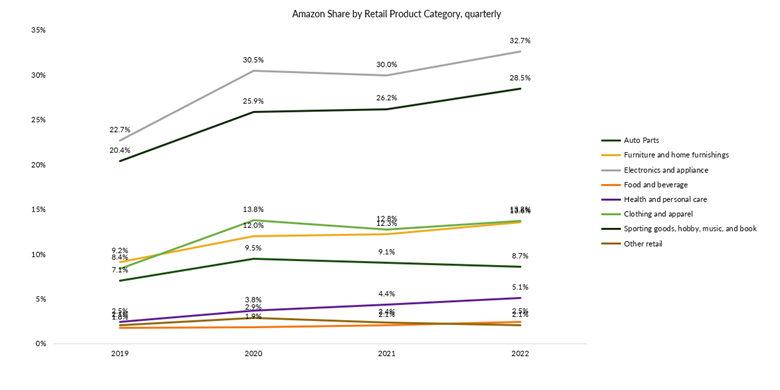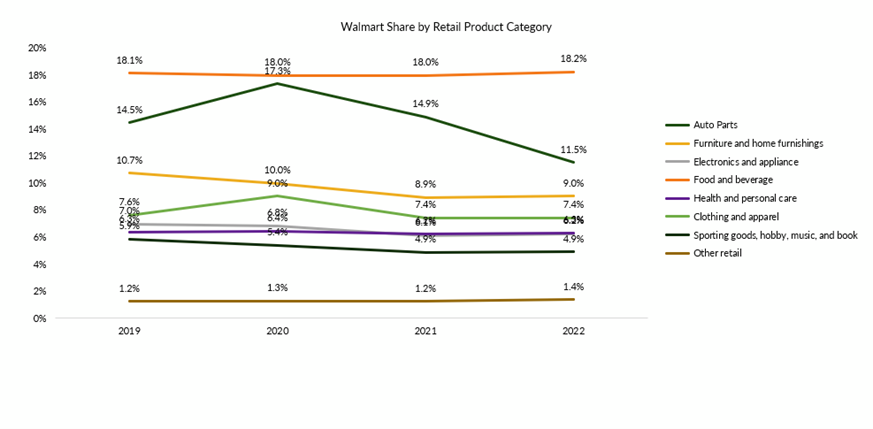Seemingly as long as the world’s top two retailers have competed, Walmart has been considered the go-to for groceries while Amazon leads in non-food sales. Walmart’s crown in groceries is not currently at risk, but Amazon seems determined to disrupt this balance in upcoming months and years.
One of the latest examples of this new approach can be found in Amazon’s July Prime Day sales, which included grocery-specific deals through Amazon Fresh designed to win over shoppers such as 20% off in-store purchases leading up to the event and $20 off grocery purchases of $100 or more online during Amazon’s Prime Days. Notably, this represents a more aggressive approach, as these grocery-specific deals are stronger than the retailer’s previous year’s offer of 20% off “select everyday essentials” from U.S. Amazon Fresh stores.
Additionally, Amazon is reportedly refocusing its grocery efforts to more fully compete with rival Walmart. The coming changes include updated stores, a warehouse automation pilot and perishable food delivery to non-Prime members. Amazon will additionally work on making Whole Foods, Amazon Fresh and its eCommerce offerings available to be purchased via a single online cart. Some analysts have considered this move the most important change in the grocery space for Amazon since the acquisition of Whole Foods.
This push in groceries began many months ago. Amazon has been luring consumers with its “Stock Up and Save” program, which gives Prime members 20% off household essentials — groceries are among the most prominent category, and the mix spans both name brand and private-label offerings — once the online shopping cart’s tally exceeds $50.
Amazon’s ambitious plan, overall, seems to be disruptive of a long-running market split reflected in PYMNTS’ research measuring retail sales by category over time. PYMNTS data shows that while the difference between Walmart (18% market share) and Amazon (2%) in food and beverage is still very significant, Walmart’s share of grocery is flat, and Amazon’s is growing.
This graph illustrates Amazon’s sales share by category from 2019 to 2022.
Advertisement: Scroll to Continue

Source: PYMNTS
Proprietary research
Amazon’s share in each category has been increasing, except for sport goods. Though some categories such as electronics and appliances have seen significant market share increases, others such food and beverages have had more uneven growth year to year — but growth nonetheless.
During the same time period, Walmart’s market share trends are generally flipped as reflected in the below chart, suggesting that Amazon’s captured market share may well have come from the big box giant.

Source: PYMNTS
Proprietary research
Instead of the overall growth seen with Amazon, Walmart’s market share across retail product categories has decreased or remained relatively flat during the same time period, and the categories that did experience growth — groceries, “other” and health or beauty care — only rose less than half a percentage point each. The Bentonville-based retailer’s strongest product category remains food and beverage, with an 18% market share as consumers continue to seek bargains and deals while grocery shopping.
Despite Amazon’s initiatives in this space and a promising, but timid, growth in groceries, the company wants to remain cautious. During the company’s most recent quarterly earnings call, Amazon CEO Andy Jassy remarked on these North America expansion plans. “We’re not going to expand the number of Fresh stores in a very significant way until we believe we have something that is resonant with customers and that we’re going to like the return on invested capital.”
Amazon has a long way to go before seriously challenging Walmart’s stronghold over grocery sales. However, any incremental share in Amazon’s sales may come at the expense of Walmart’s sales which, undoubtedly, would damage the retailer.






